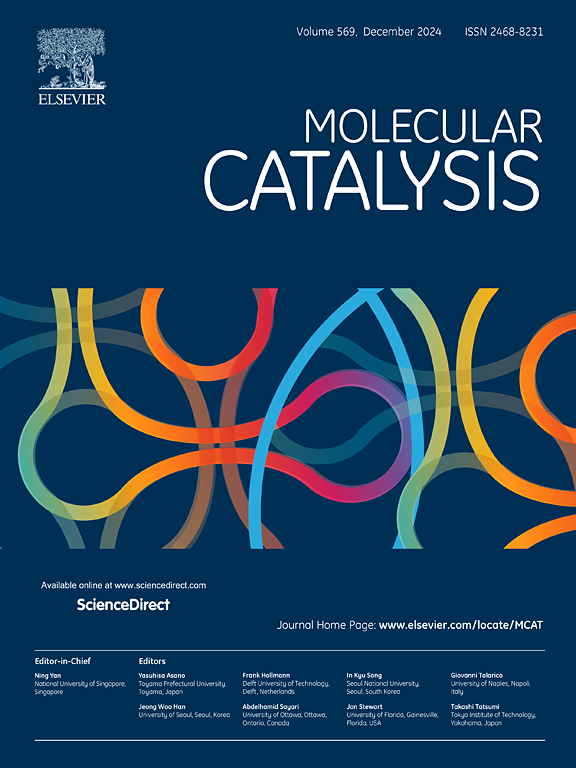CuOx/CoOx tandem catalyst for effectively reducing nitrate to ammonia
IF 3.9
2区 化学
Q2 CHEMISTRY, PHYSICAL
引用次数: 0
Abstract
Electrocatalytic nitrate reduction reaction (NO3RR) offers a promising alternative to the Haber–Bosch process but requires efficient NH4+ electrocatalysts with enhanced performance and selectivity. Although copper-based catalysts have been extensively researched and employed in electrocatalytic NO3RR, the robust adsorption of intermediates and poor hydrolytic association activity of the catalysts result in reduced ammonia selectivity and interference of competing reactions. This study describes a nanoscale CuOx and CoOx coupling catalyst (CuOx/CoOx) with the most suitable ratio and tandem structure. Efficient and highly selective elimination of NO3− was accomplished through the tandem catalysis of two oxides. Efficient and notably selective elimination of NO3− was accomplished through the tandem catalysis of the two oxides. The CuOx/CoOx tandem catalyst achieved a NH4+ selectivity of 90.1 %, NH4+ Faraday efficiency of 95.3 % at a NO3− concentration of 400 mg/L with a cathodic potential of −0.58 V vs. RHE, and showed desirable stability, attributed to the twin lively website synergy and oxygen vacancy defects of the catalyst.

CuOx/CoOx串联催化剂有效还原硝酸盐为氨
电催化硝酸还原反应(NO3RR)是一种很有前途的替代Haber-Bosch工艺的方法,但需要高效的NH4+电催化剂,具有更高的性能和选择性。尽管铜基催化剂在电催化NO3RR中得到了广泛的研究和应用,但由于铜基催化剂对中间体的吸附能力较强,水解缔合活性较差,导致氨选择性降低,竞争反应受到干扰。本研究描述了一种具有最合适配比和串联结构的CuOx/CoOx纳米级偶联催化剂。通过两种氧化物的串联催化,实现了NO3−的高效、高选择性去除。通过两种氧化物的串联催化,实现了NO3−的高效选择性去除。在NO3 -浓度为400 mg/L,阴极电位为- 0.58 V的条件下,CuOx/CoOx串联催化剂的NH4+选择性为90.1%,NH4+法拉第效率为95.3%,并表现出良好的稳定性,这主要是由于催化剂的双活性位点协同作用和氧空位缺陷。
本文章由计算机程序翻译,如有差异,请以英文原文为准。
求助全文
约1分钟内获得全文
求助全文
来源期刊

Molecular Catalysis
Chemical Engineering-Process Chemistry and Technology
CiteScore
6.90
自引率
10.90%
发文量
700
审稿时长
40 days
期刊介绍:
Molecular Catalysis publishes full papers that are original, rigorous, and scholarly contributions examining the molecular and atomic aspects of catalytic activation and reaction mechanisms. The fields covered are:
Heterogeneous catalysis including immobilized molecular catalysts
Homogeneous catalysis including organocatalysis, organometallic catalysis and biocatalysis
Photo- and electrochemistry
Theoretical aspects of catalysis analyzed by computational methods
 求助内容:
求助内容: 应助结果提醒方式:
应助结果提醒方式:


